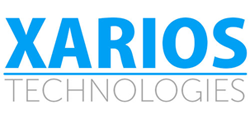

The Communication Server controls who can access the system and features by requiring each person that needs access to have a user account configured. These users are different from the PBX users or Microsoft® Active Directory users - although they can be linked. Each Communication Server user account has authentication details configured against it; either with a username and password, or a Windows logon name if Active Directory authentication is being used.
The privileges that are needed are then controlled for each user via User Roles, and this controls what they can do with the system. For example a supervisor user could be granted access to the configuration section of the website and allowed to manage other users, whilst a basic user could have no access to the website and is used only for assigning calls to.
As each user will generally be a PBX user and making and receiving calls, multiple extensions and/or agent IDs can be associated with them. This enables all the calls a user makes (even if they have multiple devices) to be associated with them. This also reduces the configuration information that an end user needs to provide and ensures that they connect using the correct details.
Users are organized into Business Units within the site to group them into logical departments or teams. These departments can be linked to existing Operational Units (OUs) in a Microsoft® Active Directory if required.
Users can be manually created if necessary but in order to keep maintenance of users to a minimum, most customers would opt to automatically create users. (See User Auto-creation section).
 |
If you are planning to automatically create users make sure to plan in advance of the installation to establish the process and ongoing maintenance of the Users. For example, if you plan to create users based on Active Directory then the customer's IT manager needs to be consulted. |
The Business Units are grouped and maintained in a tree style structure with the users assigned to a specific unit. Individual users can be drag and dropped into different units. The different types of Users and Business units are shown by the type of icon shown against each entry.
| Type | Description |
|---|---|
 Users: Users: |
This is an individual user on the system. |
 Business Unit Business Unit |
This is a specific business unit. |
 Unassigned User Business Unit Unassigned User Business Unit |
This contains any users that are not assigned to a specific business unit. |
 Deleted User Business Unit Deleted User Business Unit |
This contains any users that have been deleted. |